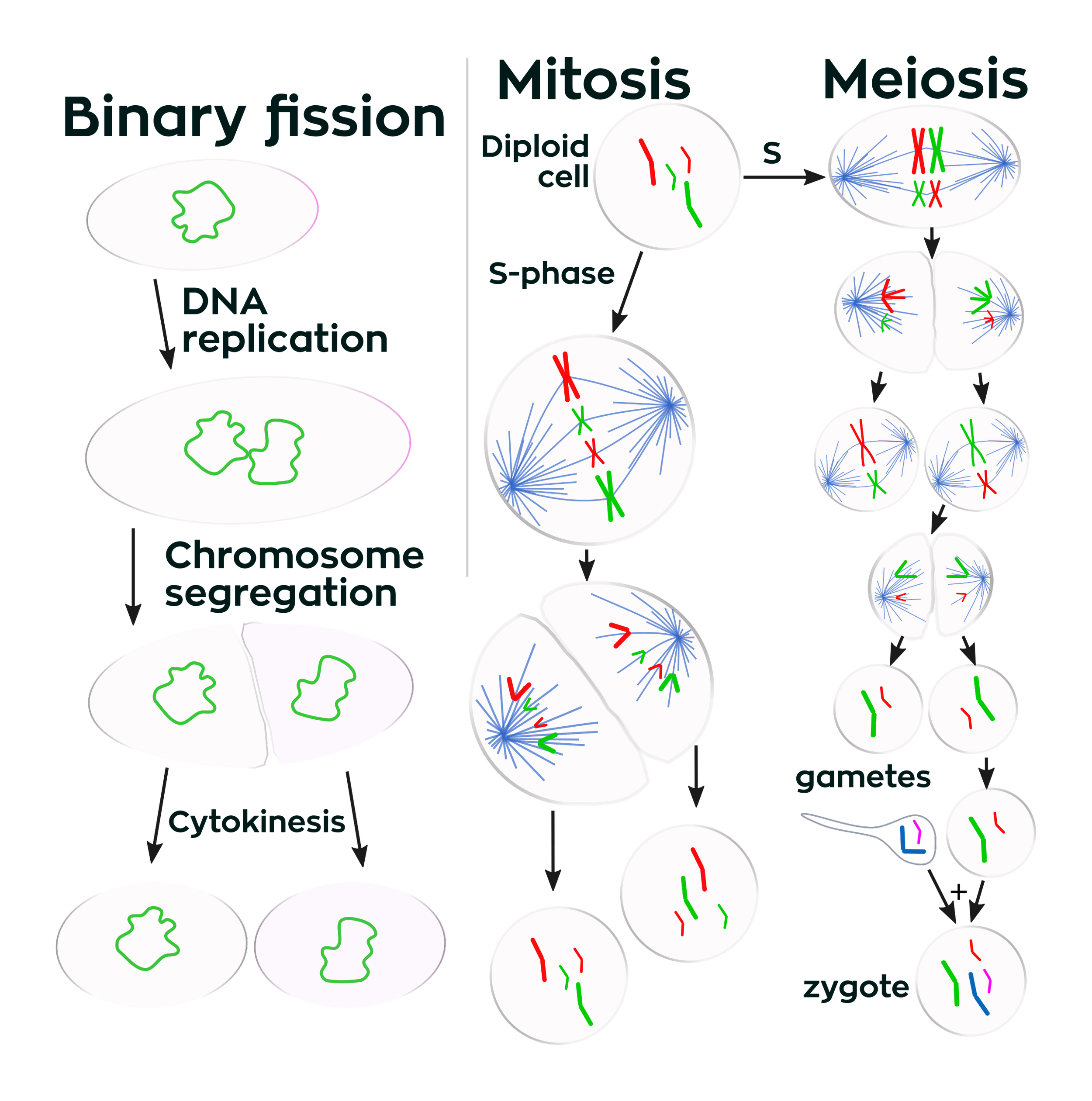Chemotherapy 101
In order to understand why chemotherapy treatments work but have those challenging side effects, you need to first understand how a cell divides. Please watch this easy-to-understand video of cancer biology and the cell cycle by the Amoeba Sisters on the YouTube channel.
Chemotherapy definition: Treatment that uses drugs to stop the growth of cancer cells, either by killing the cells or by stopping them from dividing. Chemotherapy may be given by mouth, injection, infusion, or on the skin, depending on the type and stage of the cancer being treated. It may be given alone or with other treatments, such as surgery, radiation therapy, or biologic therapy.
:
Credit: https://en.wikipedia.org/wiki/Cell_division
There are various types of chemicals that people have found to be helpful in treating cancers. The first chemotherapy drug was discovered in the 1960s and was initially used to treat lymphoma patients. During the war effort, an accident occurred in the production of mustard-gas-like agents, and researchers found that patients affected by the agent had mostly dead lymphoid and myeloid cells in their blood (these are a type of white blood cell precursors). They theorized that this gas could stop the division of certain types of somatic cells that usually tend to divide rapidly. Thus began an era to find more chemicals to help cancer patients.
In similar approaches to the mustard gas methods, researchers used anti-folates to begin their search. They looked for crucial vitamins needed for DNA metabolism, such as folic acid, and synthesized similar analogs that could block the actual functioning of the essential item. With this method scientists were able to cure almost all children with acute lymphoblastic leukemia (in 1948)!
There are several ongoing efforts to find these chemotherapy compounds. Examples of promising projects and treatment-types are Zubrod’s initiatives, Taxanes, Camptothecins, platinum-based agents, nitrosoureas, anthracyclines and epipodophyllotoxins. In each instance scientists searched for compounds with their own unique mechanisms for disrupting cell division.
Zubrod initiatives are US Army-led developments of the National Cancer Institute-guided programs that developed natural products derived from plant and marine compounds leading to the discovery of many taxanes and Camptothecins in the 1960s.
Taxanes are anti-mitotic agents that disrupt microtubules. If you imagine a skyscraper building, microtubules are like steel beams that would hold up a cell. Paclitaxel is one example.
Camptothecins is a class that inhibits topoisomerase 1, an enzyme that allows DNA unwinding, which showed a lot of promise pre-clinically but was limited by its high kidney toxicity. It’s used in lung cancer.
Platinum-based agents were originally found by accident, because a researcher initially wanted to understand the effect of electric fields on bacteria. The bacteria unexpectedly divided when placed in an electric field, leading to the discovery of this new class of compounds. Examples are carboplatin and cisplatin, which have broad anti-tumor activity and less kidney toxicity when compared to Camptothecins.
Nitrosoureas are synthetic compounds that cross-link DNAs and are purine analogues that mimic one of the building blocks of DNA.
Anthracyclines and epipodophyllotoxins inhibit topoisomerase II, another crucial enzyme for DNA synthesis.
Pemetrexed is one chemotherapy medicine approved for the use for NSCLC lung cancer by the FDA. This chemical mimics the structure of the purine/pyrimidine precursor from forming in the cells, which prevents the cells from replicating.
Credit: istockphoto.com
This image above shows how researchers “imagine” a DNA synthesis might occur inside a cell. Imagine two strands with their corresponding complements. The replication process is performed by an enzyme (in this case a helicase) to open up the DNA in the right orientation. There will be a leading strand (normal) and a lagging strand (the one that is only going to end up in pieces or Okazaki fragmenets). As with any process there may be mistakes that have been checked and verified by part of the DNA machinery. There is a calculated risk of a mis-sense mutation at this stage that can introduce some mutations during replication; the frequency is low but not zero. DNA machinery works usually in the 5’ to 3’ direction (it’s called 5-prime to 3-prime direction).
For those areas in the body with high cell replication, the numbers of cells affected by chemotherapy treatment is high. Examples are areas such as follicle cells or skin cells, causing problems of hair fallling out, or lesions in the mouth area. These areas need time to heal, so rest & good nutrition are key complements to this type of treatment.
After understanding how chemotherapy works, one question arises: why is there resistance to a TKI or a chemotherapy treatment? Keep your eyes on the ALK Positive Support Group on Facebook to see when Alice Chou posts her thoughts on the question.
Read here for How Chemotherapy works
Author: Alice Chou



